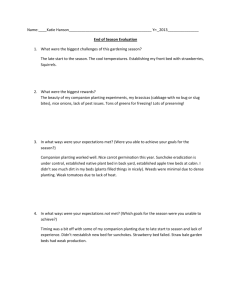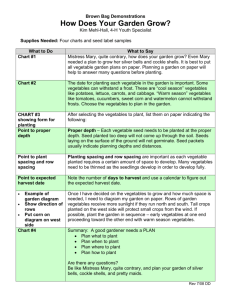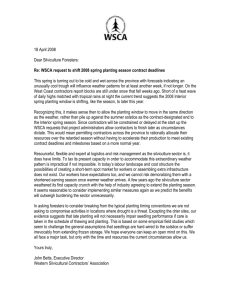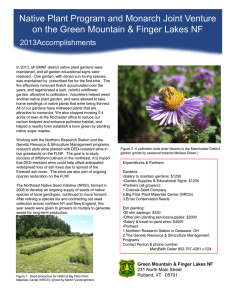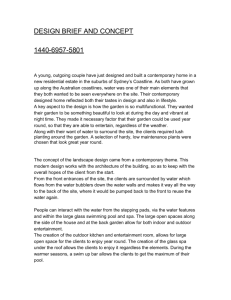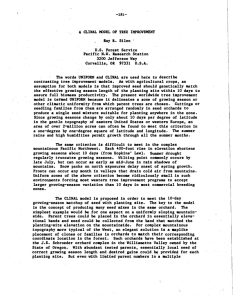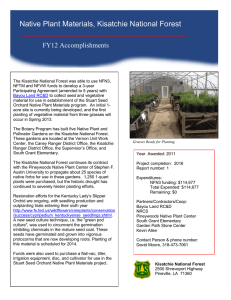Curriculum Development for Agricultural Apprenticeships
advertisement
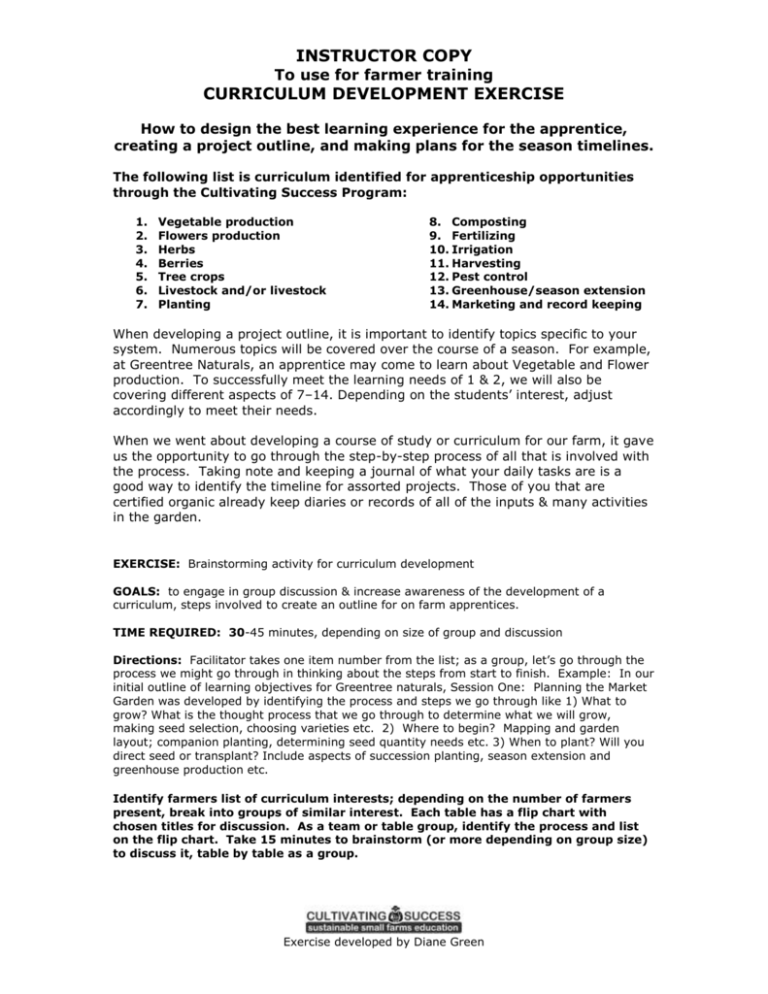
INSTRUCTOR COPY To use for farmer training CURRICULUM DEVELOPMENT EXERCISE How to design the best learning experience for the apprentice, creating a project outline, and making plans for the season timelines. The following list is curriculum identified for apprenticeship opportunities through the Cultivating Success Program: 1. 2. 3. 4. 5. 6. 7. Vegetable production Flowers production Herbs Berries Tree crops Livestock and/or livestock Planting 8. Composting 9. Fertilizing 10. Irrigation 11. Harvesting 12. Pest control 13. Greenhouse/season extension 14. Marketing and record keeping When developing a project outline, it is important to identify topics specific to your system. Numerous topics will be covered over the course of a season. For example, at Greentree Naturals, an apprentice may come to learn about Vegetable and Flower production. To successfully meet the learning needs of 1 & 2, we will also be covering different aspects of 7–14. Depending on the students’ interest, adjust accordingly to meet their needs. When we went about developing a course of study or curriculum for our farm, it gave us the opportunity to go through the step-by-step process of all that is involved with the process. Taking note and keeping a journal of what your daily tasks are is a good way to identify the timeline for assorted projects. Those of you that are certified organic already keep diaries or records of all of the inputs & many activities in the garden. EXERCISE: Brainstorming activity for curriculum development GOALS: to engage in group discussion & increase awareness of the development of a curriculum, steps involved to create an outline for on farm apprentices. TIME REQUIRED: 30-45 minutes, depending on size of group and discussion Directions: Facilitator takes one item number from the list; as a group, let’s go through the process we might go through in thinking about the steps from start to finish. Example: In our initial outline of learning objectives for Greentree naturals, Session One: Planning the Market Garden was developed by identifying the process and steps we go through like 1) What to grow? What is the thought process that we go through to determine what we will grow, making seed selection, choosing varieties etc. 2) Where to begin? Mapping and garden layout; companion planting, determining seed quantity needs etc. 3) When to plant? Will you direct seed or transplant? Include aspects of succession planting, season extension and greenhouse production etc. Identify farmers list of curriculum interests; depending on the number of farmers present, break into groups of similar interest. Each table has a flip chart with chosen titles for discussion. As a team or table group, identify the process and list on the flip chart. Take 15 minutes to brainstorm (or more depending on group size) to discuss it, table by table as a group. Exercise developed by Diane Green

